Chemistry in motion
Edinburgh’s leading chemists both past and present are household names among the scientific community.

The likes of Joseph Black are historic giants of the field, and today our researchers and teachers continue to lead the way, both in their science and in public engagement.
Labs named in honour of Christina Miller
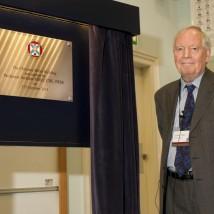
In October 2014 the Chemistry teaching laboratories, which were opened in 2000, were renamed the Christina Miller Building. Dr Christina “Chrissie” Miller (1899–2001) studied and worked at the School of Chemistry from 1921 to 1961, and in 1949 was the first female chemist to be elected to the Royal Society of Edinburgh. Her research was highly regarded, but she is most fondly remembered by alumni and colleagues for her commitment to teaching and training future chemists. The building’s naming ceremony was followed by an alumni dinner at the Royal Society of Edinburgh.
James Crawford
(1682-1731)
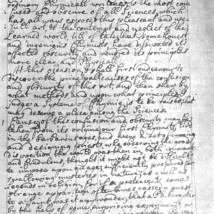
Teaching of chemistry at Edinburgh began more than three centuries ago when Leith-born James Crawford was appointed to the Chair of Physick and Chymistry in 1713. At that time, chemistry was considered an offshoot of medicine (“physick”), but notes of Crawford’s lectures show that he was among the early proponents of chemistry being considered a branch of science in its own right. In his first lecture he says he will “shew by what methods and upon what principles, I judge a System of Chymie is to be raised, that it may deserve a place among the Sciences”. His appointment and his work, with limited resources, played an important role in the recognition of the subject.
Joseph Black
(1728-1799)
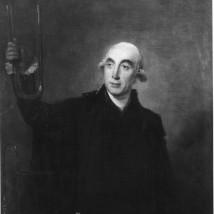
Joseph Black was educated at home by his Scottish mother, and began his university studies at Glasgow, moving to Edinburgh to graduate in medicine. In 1755 he outlined to the Philosophical Society of Edinburgh the experimental approach that became a foundation of a revolution in chemistry. Among Black’s landmark achievements were the invention of the analytical balance, while he was a student, and his discoveries of carbon dioxide and latent heat – the energy needed to melt ice or boil water. Black was a luminary of the Scottish Enlightenment. Adam Smith, the political economist, loved nothing more than to get Black and James Hutton, the geologist, together at the Oyster Club and listen to them talk.
ChemSoc
Established 1785
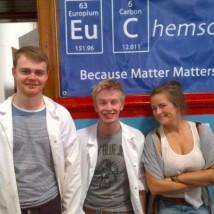
Edinburgh University Chemistry Society is the oldest chemistry society in the world. Official records date back to 1874, but in preparations for the apparent 60th anniversary of its foundation, it was discovered that a “list of members of the Chemical Society” was drawn up by Joseph Black in 1785. ChemSoc today plays an important role in the life of the School of Chemistry, organising lectures and social and sporting events, and with a membership that includes most staff and students.
Chemistry: The Opera
In 2013 the University celebrated 300 years of chemistry teaching with a series of events. Julian Wagstaff (PhD Musical Composition 2008) composed an opera, Breathe Freely, which was performed at the Assembly Rooms in Edinburgh. The work, set in Edinburgh at the closing stages of the Second World War, takes its title from a book written in 1938 by Professor James Kendall,
head of Chemistry 1928–1959, and characters portrayed include Dr Chrissie Miller. The opera has recently been recorded at Scottish Opera’s Glasgow studios, to be released in 2015.
Alexander Crum Brown
(1838-1922)
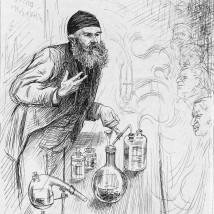
Alexander Crum Brown’s most prominent legacy is the system of representing chemical compounds in diagrammatic form that is still used today, with atomic symbols enclosed in circles and lines drawn between atoms to represent chemical bonds. Crum Brown grew up in Edinburgh, and joined the University as an arts student, before a second degree in medicine. He went on to study chemistry in Germany. He took a lectureship at Edinburgh before being appointed Chair of Chemistry in 1869. He had a lifelong interest in weaving, knitting and knots, and his famous, pioneering model showing the crystal structure of Sodium Chloride, held in the School of Chemistry Collection, is made from knitting needles and balls of wool.
Sir James Walker
(1864-1935)
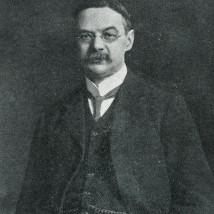
James Walker oversaw the dramatic expansion of chemistry at Edinburgh. – despite his plans being interrupted by the First World War. Walker’s enthusiasm was fired by the teaching of Alexander Crum Brown, for whom he worked as a research assistant after graduating, and whom he succeeded as Chair of Chemistry in 1908. Walker was planning a new home for chemistry when war broke out. During the war Walker and his colleagues undertook exceptionally successful production of TNT for the government. Expansion plans then resumed, resulting eventually in the opening of the laboratories at King’s Buildings in 1924. Walker’s vision included possible future expansion of labs, including a second storey, which has subsequently happened.
Christina Miller
(1899-2001)
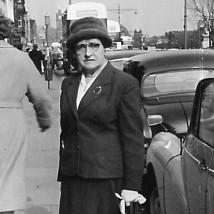
Christina “Chrissie” Cruickshank Miller was one of the first five women elected to the Royal Society of Edinburgh, in 1949. In 1920 Miller graduated from the University of Edinburgh with a BSc with special distinction, having won the class medal, and was awarded the Vans Dunlop Scholarship which allowed her to undertake research for her PhD. She worked under Professor Sir James Walker, and went on to produce the first sample of pure phosphorus trioxide in 1928. By showing it emitted no light, she proved it did not cause the glow of phosphorus. This was described as “the greatest advance in knowledge of the topic in the last 20 years”. She was awarded the Keith Prize by the Royal Society of Edinburgh in 1929.
Lesley Yellowlees
BSc 1975, PhD 1983
Lesley Yellowlees, Vice-Principal, Head of the College of Science and Engineering, and Professor of Inorganic Electrochemistry, became the first female President of the Royal Society of Chemistry in 2012. She was the University’s first female Vice-Principal. Her interests include public engagement and the promotion of women in science, and she makes regular appearances at international conferences on gender equality. She is named in the BBC’s 2014 list of the world’s most influential 100 women “trying to change the world”. Her research specialism is spectroelectrochemistry, focusing on optimising the structure of dyes for use in solar cells. She was appointed CBE in the 2014 New Year Honours.
Eleanor Campbell
BSc 1982, PhD1985
Professor Eleanor Campbell is Head of the School of Chemistry. She is a Fellow of the Royal Society, having been appointed in 2010 for her experimental research. She is also a Fellow of both the Royal Society of Chemistry and the Institute of Physics. Her recent work includes the development of nanoelectromechanical devices using carbon nanotubes.
Athena Swan Gold

In 2012 Edinburgh’s School of Chemistry became only the second academic institution to receive an Athena Swan Gold Award for advancing the careers of women in science, engineering, technology, mathematics and medicine (STEMM). Also in 2012 Professor Polly Arnold, Crum Brown Chair of Chemistry, won the Royal Society Rosalind
Franklin Award and used it to investigate women’s under-representation in STEMM subjects,producing a film and book, 'A Chemical Imbalance'.

